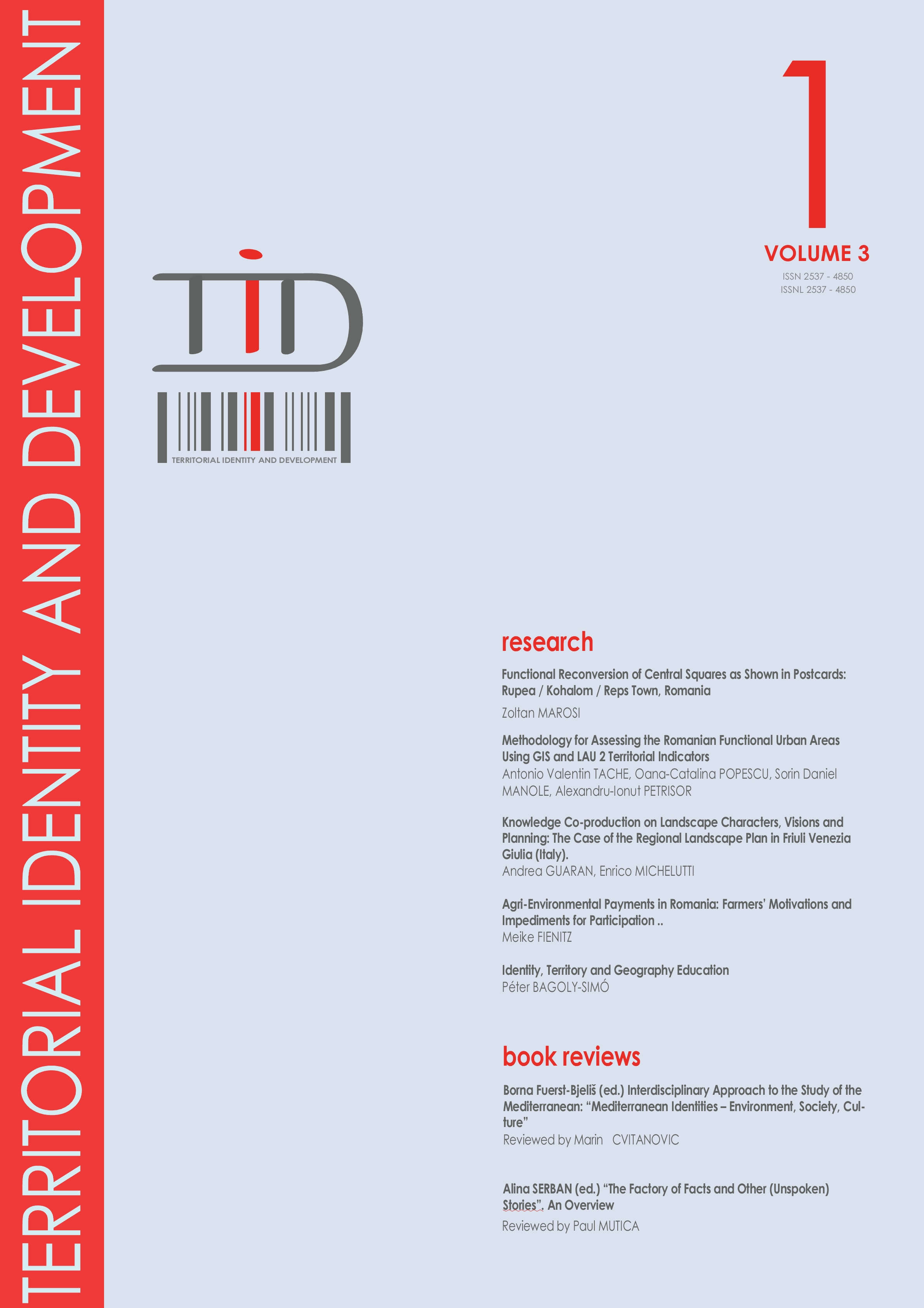FUNCTIONAL RECONVERSION OF CENTRAL SQUARES AS SHOWN IN POSTCARDS: RUPEA / KŐHALOM / REPS TOWN, ROMANIA
FUNCTIONAL RECONVERSION OF CENTRAL SQUARES AS SHOWN IN POSTCARDS: RUPEA / KŐHALOM / REPS TOWN, ROMANIA
Author(s): Zoltan MaroșiSubject(s): Geography, Regional studies, Regional Geography
Published by: Universitatea Babeş-Bolyai
Keywords: postcards; urban landscape; evolution; reconversion; central squares; parks; Rupea; Kőhalom; Reps;
Summary/Abstract: Deltiology, the study and collection of postcards, is a relatively new term, introduced in the dictionaries only in the middle of the 20th century. However, studying and collecting postcards is a much older concern and it is directly linked to the history of photography from the first half of the 19th century. The introduction of postcards in Romania and, especially in Transylvania, was achieved mainly through Western influences, proved by the greater number of available relevant postcards with reference to Transylvania than to the other historical extra-Carpathian provinces. Based on a modest but very relevant collection of postcards, this research aims to enrich the knowledge about the little-known town Rupea and especially to encourage the urban history research using unconventional sources of information, methodologies and methods. In this case the collection of postcards will be analysed, sorted and ordered chronologically after the most accurate dating possible, so as to display the distinct stages in the evolution of Rupea town’s central square from an animated market in the past to a quiet and picturesque park at present. Thus, this evolution also implies a functional reconversion of the town’s central square whose phases are immortalized by illustrations starting with 1851 until 2018. During this time, the town of Rupea was part of three different national administrations, until 1867 it was part of the Habsburg Empire, between 1867-1918 it was under the administration of the Hungarian Kingdom which was part of the Austro-Hungarian Empire and since 1918, or after the Treaty of Trianon, it became part of Romania (which was a monarchy, a socialist republic, and since 1991 a democratic republic). Therefore, the analysed period has not only a strong historical significance for the Transylvanian settlements but also includes the entire evolution and formation of the current cultural landscapes. In order to achieve the purpose of this article, the illustrated postcards will be redrawn, identified, described and interpreted in accordance with the territorial planning procedures, contributing to the consolidation of the history and local identity, as part of a long-term and sustainable development.
Journal: Territorial Identity and Development
- Issue Year: 3/2018
- Issue No: 1
- Page Range: 5-23
- Page Count: 19
- Language: English

